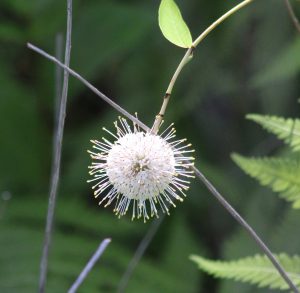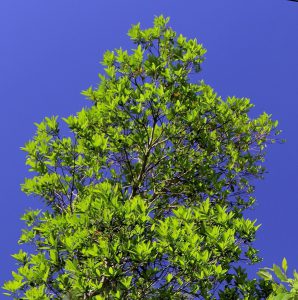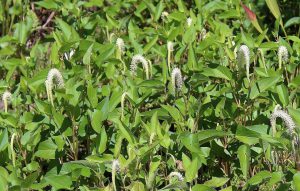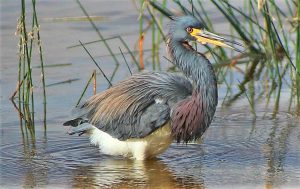You can add some plants to make it look natural and attract wildlife
Having a lawn around the pond is not the best answer for attracting wildlife. According to the Florida Friendly principles, a lawn should not be any closer than 10 feet from a pond. Inside this 10-foot border, you can reduce the use of lawn, and any invasive plants such as torpedo grass should be eliminated as well. Instead, you would make it a zone of no pesticides, no fertilization, and no mowing. This can be accomplished by planting some native plants which can help you to attract wildlife, including birds, fish, and invertebrates. This will not only look better, but can also reduce runoff and flooding, and can help to catch sediments to reduce water contamination. And the best part is that your mowing is going to be smaller.
To further improve water conditions
- pet waste should be picked up,
- car oils should be cleaned off driveways.
- grass clippings should be blown off concrete areas onto the lawn.
- irrigation and downspouts should not flow onto concrete areas either.
What kind of plants will I need?
First, the invasive ones such as torpedo grass, water hyacinth, cat tail, duck weed, and water lettuce must be removed if present.
Next, you will use different plants for different levels of water or soil wetness. Shoreline plants can include small plants, shrubs, and even trees which can tolerate some flooding.
- Trees include bald cypress, pond cypress, red maple, loblolly bay, and sweet bay magnolia. Though bald cypress can tolerate permanent water, it does better out of the water.
- Shoreline shrubs are also a good idea, since birds use them for cover and nests. These plants can tolerate some flooding, and the list includes elderberry, button bush, and Virginia willow.
- Cordgrass, and muhly grass will also work in this zone.
- There is also a nice selection of suitable smaller plants. Included are cinnamon fern, royal fern, cardinal flower, lizards tail, marsh beggartick, flue flag iris, meadow beauty, St John’s wort, and golden canna.
Once we get into the more permanent shallow water, we have pickerelweed, duckweed, soft rush, bulrush, alligator flag, and spikerush. These prefer at least 2 inches of water.
For the deeper water, the native water lily can’t be beaten. Both types of gallinules (birds) actually walk on lily pads.
Here are a few of my photos of suitable plants, along with a wild visitor or two.
 Lizard tails
Lizard tails
 Pickerelweed
Pickerelweed
 Buttonbush
Buttonbush
 Loblolly Bay
Loblolly Bay
 Natural area of lizard tails
Natural area of lizard tails
 Tricolored Heron or “Louisiana Heron”
Tricolored Heron or “Louisiana Heron”
These birds wade in shallow water to hunt. They sometimes use their wings to create shade. It is thought that this hunting tactic may enable the bird to see the fish better without glare. It is also thought that the large shaded area keeps fish from realizing that a bird is waiting for them.
 Tricolored Heron or “Louisiana Heron”
Tricolored Heron or “Louisiana Heron”
 Little Blue Herons also like to wade in shallow water.
Little Blue Herons also like to wade in shallow water.
ALL PHOTOS BY SANDI SWITEK
Need more information:
For more information about Florida Friendly Plants and Wildlife you can email me at epabon5@ufl.edu or like us to learn about new classes or events at Gardening in Central Florida
By: Sandy Switek since 2005 and Eva Maria Pabon Residential Horticulture Agent
Do you want to read more about gardening? Follow our blog Eva Pabon, Author at UF/IFAS Extension Osceola County (ufl.edu)
 1
1

